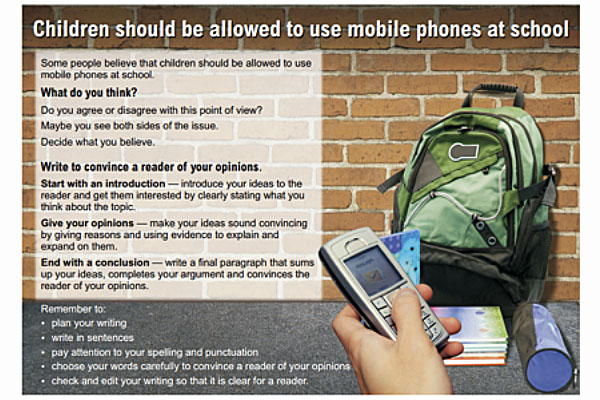By Tom March
How Did We Get Here?
In two preceding articles, the author argued for using tests to drive innovation and to define these radical tests based on criteria clearly linked to a school’s core values. With this context, this article offers three examples to inspire a school community to achieve what matters most!
The premise is simple and blindingly obvious: to achieve great outcomes, schools should know what they are looking for, see whether they are achieving it and use the result to do more of the good and fix the bad. As much as this sounds like commonsense, few schools operate on such a premise. Sure, schools have students take lots of tests, but those that ‘matter most’ are tied to the National Assessment Program – Literacy and Numeracy (NAPLAN) and Year 12 Australian Tertiary Admission Ranks (ATARs), with nary a link or wink to continuous improvement and they certainly ignore many of the significant goals expressed in the school’s vision and values. While teachers and school leaders work very hard and with great commitment, it is within a system that runs, yet fails to innovate; that churns through new initiatives, yet makes little positive change.
Because every school is at a different place in its journey for continuous improvement and managing change, three examples follow so that action can be taken immediately at different levels: classroom teachers, the school and the system. In the interest of brevity, one example will be used to illustrate each level. This is not to suggest that these are the only, or even the best, examples, but they do stand as powerful markers of what teachers can make happen.
Teachers: GRASPS Tasks
The late Grant Wiggins and Jay McTighe are well known and respected for their Understanding by Design (UbD) framework. A core tenet of UbD is ‘backward design’, where learning targets are defined and assessments created that provide evidence of the desired learning, or as McTighe likes to say, “We have proof beyond a reasonable doubt that students have achieved the goals.” Wiggins and McTighe devised a useful acronym as a scaffold for creating engaging and authentic tasks: GRASPS. As Jay McTighe explains, “Grant Wiggins and I created a task design frame based on the acronym G.R.A.S.P.S. Here are the G.R.A.S.P.S. elements that are used to frame a performance task: (1) a real-world Goal; (2) a meaningful Role for the student; (3) authentic (or simulated) Audience(s); (4) a contextualized Situation that involves real-world application; (5) student-generated Products and Performances; and (6) performance Standards (criteria) by which successful performance would be judged.” (McTighe, 2015)
Every classroom teacher could use such a scaffold to enrich current assessments in order to achieve the broader goals expected by their school and community. As an example, consider a National Assessment Program (NAP) persuasive writing test and see how the standard approach might be upgraded. Various examples of the task stimulus can be found on the NAP writing page or Queensland’s persuasive writing test preparation page. For the purpose of this exercise, here is one example stimulus:

Those familiar with the test will recognise the standard initial ‘What do you think?’ prompt and the coaching on structuring the essay, as well as the ‘Remember to’ bullet points. Using the GRASPS scaffold, teachers might come up with:
Should students be allowed use mobile phones at school?
You not only graduated from your school, but you are now its principal! (situation)
A big part of your job is to support the school’s vision (role), something you believe in and that is important to parents and students. How does mobile use relate to these values?
You have heard arguments from teachers, students and parents (audience) on both sides and now you need to write an article on this for the school newsletter (performance/product). Think about how phone use by students can be good and bad and decide on your overall opinion. Because you are trying to persuade people to understand your view (goal), use the school vision to make your case, include the persuasive writing criteria that you have practiced, and so people can easily follow your ideas, use the intro – body – conclusion format (standards).
With these simple adjustments, teachers have stayed true to the NAP requirements and even improved on them by encouraging use of the marking criteria. The upgrade also prompts students to integrate their school’s values and how these come to life when challenged, thus bringing what matters most to the school into classroom learning and students’ thoughtful reflection. Finally, accenting a real goal through the role, audience and situation bodes well for outright student achievement on the writing task, as evidence by research into intrinsic motivation. (Maarten et al, 2006)
Schools: Del Lago Academy’s Competency-Based Learning
As powerful as one teacher’s efforts to enrich learning through richer learning tasks can be, imagine what happens when a whole school takes on this mission. Del Lago Academy, in Escondido, California, is one such school. Like many schools, Del Lago posts its mission on its website in four overarching goals:
- bring relevance to the daily curriculum in all content areas
- develop habits of work
- foster college and career exposure and exploration
- expand scholars’ social networks and access to opportunities
A few short paragraphs cannot do justice to what the leaders, teachers and scholars ( students) are growing at Del Lago Academy, but it includes a completely interdisciplinary curriculum, lots of writing as assessments, Year 11 internships for all students, authentic audiences for each project, team teaching and structuring the school to promote conversations and easy access between teachers and scholars.
In respect to the current topic, their competency-based model illustrates how a whole school can use assessments to support its goals for student learning. As a long-time advocate of using student competency – rather than the calendar – to determine progress through a curriculum, I was eager to dig deeper into what happens when a school takes on such a challenge and spoke with Keith Nuthall, principal of Del Lago Academy, who thoughtfully reflected on their journey so far. Nuthall said, “The competencies tell a very important story. One thing we do every year is we take all our assessments for a grade level and lay them all out in one room at one time. And then have different grade levels walk down and look at the assessments with the lens of, ‘If you look at what we are measuring, what does it tell students about what we value?’ This built-in, ongoing reflection helps keep the alignment between their core values and daily classroom practice.”
Nuthall went on to offer insights that only come from experience, “As it becomes important to the students to reach the competency, sometimes the end result is that it narrows the curriculum. You have to be super, super careful or you’re going to create a culture on campus of ‘you gotta get them through’. That was something that didn’t come to mind until you live it.” As education shifts to a bring your own device (BYOD)/personal device reality, a competency-based approach makes far more sense than having all students working in lock-step; it is helpful to hear about the challenges that follow.
One strategy Del Lago is experimenting with this year sees Year 12 students essentially creating their own ‘capstone’ course and performance task. Because only three of four courses are required, as Nuthall said, “Rather than create an elective that ‘we thought would be good for them’, we let them design it.” This is one way to expand that narrowing tendency inherent in a competency-based approach: to send a message to all students that the ‘big game’ is total choice and performance. “It might be an internship. It might be a class at the local community college. It might be a project. It might be volunteering,” suggests Nuthall.
Clearly, Keith Nuthall and his team and scholars at Del Lago Academy are pushing engaged learning and growing what is possible today and hinting at what others should pay attention to as they catch up.
Systemic Mastery: Silicon Valley ‘Blooms’
All change is easier when everyone is doing it. Conversely, the status quo seems immutable when people are surrounded by what they have always known. With these two truths in mind, this article is concluded with a blending of the old and new.
1 Sigma Mastery Learning
1984 was not only famous as George Orwell’s prescient flip on 1948 and the introduction of the Macintosh computer, but a virtually forgotten study by Benjamin Bloom (of Bloom’s Taxonomy fame). His article The 2 Sigma Problem: The Search for Methods of Group Instruction as Effective as One-to-One Tutoring described studies into a mastery approach to teaching and learning. In summary, the article reveals findings on two variations to conventional classroom teaching. One variation used the conventional classroom and 30 students, but applied a mastery learning approach with formative tests, feedback, corrective procedures and parallel tests. Students in this group performed one standard deviation above students in the conventional class (84 percent versus 50 percent). A third group used the same mastery approach, but with students working one-on-one with a trained tutor. These students performed two standard deviations above the control group. In other words, a randomly selected student tutored using mastery learning moved from the 50th to the 98th percentile! As the article’s title emphasises, the ‘problem’ was how to scale that 1:1 benefit to classroom instruction. It is still surprising how little attention has been paid to the effectiveness of classroom-based mastery learning. Maybe that is about to change!
Invent the Future by Designing The Present
Rich assessments and a mastery approach have demonstrated their effectiveness for over 25 years with greater acceptance in the US than Australia. Perhaps these models might gain greater scrutiny now that recent Programme for International Student Assessment (PISA) scores by Australian students indicate slides in outright performance, let alone in comparison to other Organisation of Economic Co-operation and Development (OECD) schools. What can be hoped for is that any new strategies will be richer than basic skills, will include what is most important to the lives of children, be based on rigorous research and yield evidence that is used. After all, this is the kind of work teachers expect from their students.
Tom March is the Director of Innovation K-12 at Hobsons Edumate and is a long-time contributor of strategies for making learning more real, rich and relevant. He can be contacted via email tom@ozline.com or tom.march@hobsons.com


Latest posts by etsmagazine (see all)
- Introducing the MOBIUZ Ultrawide Curved Gaming Monitor – The Next Evolution in E-Gaming - January 28, 2022
- Technology For Inclusion With Diverse Learners - December 3, 2019
- 2020 Vision for Interactive Learning in Tomorrow’s Classroom - April 29, 2019
You must be logged in to post a comment.


There are no comments
Add yours